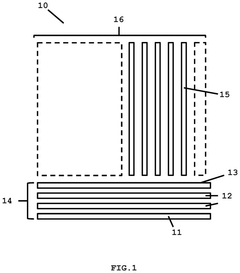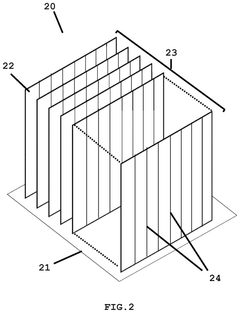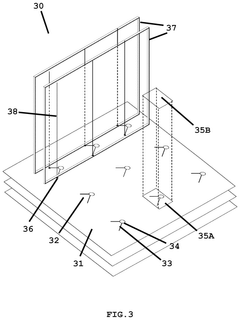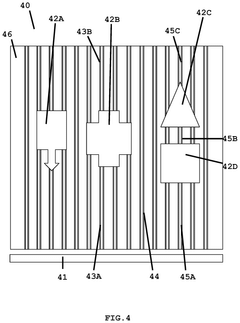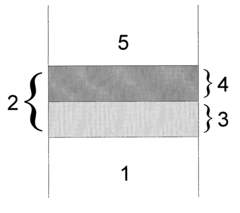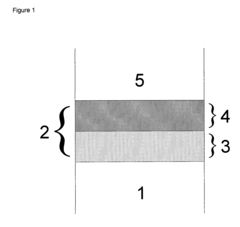Exploring Quantum Interconnects and Coating Technologies
SEP 29, 20259 MIN READ
Generate Your Research Report Instantly with AI Agent
Patsnap Eureka helps you evaluate technical feasibility & market potential.
Quantum Interconnect Technology Background and Objectives
Quantum interconnect technologies represent a critical frontier in the evolution of quantum computing and quantum information systems. The development of these technologies has progressed significantly over the past two decades, transitioning from theoretical concepts to experimental implementations that demonstrate increasing levels of reliability and performance. Quantum interconnects serve as the vital communication channels between quantum processing units, enabling the transmission of quantum information while preserving quantum coherence and entanglement properties.
The historical trajectory of quantum interconnect development began with fundamental research in quantum optics during the 1990s, followed by pioneering experiments in quantum teleportation and entanglement distribution in the early 2000s. By the 2010s, the field witnessed substantial advancements in quantum memory interfaces, photonic quantum channels, and superconducting quantum buses, establishing the foundation for today's quantum networking capabilities.
Current technological trends indicate a convergence toward hybrid quantum systems that leverage the strengths of different quantum platforms. These systems typically combine photonic elements for long-distance transmission with solid-state quantum memories or processors. The integration of advanced coating technologies has emerged as a crucial factor in enhancing the performance of quantum interconnects by reducing decoherence effects and improving signal fidelity.
The primary objectives of quantum interconnect technology development include achieving higher fidelity quantum state transfer, extending coherence times, increasing bandwidth capacity, and enabling scalable architectures for quantum networks. Specific technical goals encompass reducing photon loss in optical interconnects below 0.1 dB/km, achieving quantum memory coherence times exceeding seconds, and demonstrating entanglement distribution rates above megahertz frequencies.
Specialized coating technologies play an instrumental role in meeting these objectives by providing surfaces with precisely controlled optical, electrical, and thermal properties. Advanced thin-film coatings can minimize scattering losses, suppress unwanted electromagnetic interactions, and create tailored environments for quantum systems to operate with minimal disturbance from their surroundings.
The ultimate vision driving quantum interconnect research is the realization of a quantum internet that can distribute quantum entanglement across global distances, enabling unprecedented capabilities in secure communication, distributed quantum computing, and quantum-enhanced sensing networks. This vision requires overcoming significant technical hurdles in maintaining quantum coherence across diverse physical interfaces and transmission media.
As quantum computing hardware continues to advance, the development of robust interconnect technologies becomes increasingly critical for scaling quantum systems beyond the limitations of individual quantum processors. The synergy between quantum interconnect technologies and specialized coating methods represents a promising approach to addressing these scaling challenges.
The historical trajectory of quantum interconnect development began with fundamental research in quantum optics during the 1990s, followed by pioneering experiments in quantum teleportation and entanglement distribution in the early 2000s. By the 2010s, the field witnessed substantial advancements in quantum memory interfaces, photonic quantum channels, and superconducting quantum buses, establishing the foundation for today's quantum networking capabilities.
Current technological trends indicate a convergence toward hybrid quantum systems that leverage the strengths of different quantum platforms. These systems typically combine photonic elements for long-distance transmission with solid-state quantum memories or processors. The integration of advanced coating technologies has emerged as a crucial factor in enhancing the performance of quantum interconnects by reducing decoherence effects and improving signal fidelity.
The primary objectives of quantum interconnect technology development include achieving higher fidelity quantum state transfer, extending coherence times, increasing bandwidth capacity, and enabling scalable architectures for quantum networks. Specific technical goals encompass reducing photon loss in optical interconnects below 0.1 dB/km, achieving quantum memory coherence times exceeding seconds, and demonstrating entanglement distribution rates above megahertz frequencies.
Specialized coating technologies play an instrumental role in meeting these objectives by providing surfaces with precisely controlled optical, electrical, and thermal properties. Advanced thin-film coatings can minimize scattering losses, suppress unwanted electromagnetic interactions, and create tailored environments for quantum systems to operate with minimal disturbance from their surroundings.
The ultimate vision driving quantum interconnect research is the realization of a quantum internet that can distribute quantum entanglement across global distances, enabling unprecedented capabilities in secure communication, distributed quantum computing, and quantum-enhanced sensing networks. This vision requires overcoming significant technical hurdles in maintaining quantum coherence across diverse physical interfaces and transmission media.
As quantum computing hardware continues to advance, the development of robust interconnect technologies becomes increasingly critical for scaling quantum systems beyond the limitations of individual quantum processors. The synergy between quantum interconnect technologies and specialized coating methods represents a promising approach to addressing these scaling challenges.
Market Analysis for Quantum Computing Interconnect Solutions
The quantum computing interconnect market is experiencing rapid growth, driven by increasing investments in quantum technologies and the need for more efficient quantum systems. Current market estimates value the quantum computing market at approximately $500 million, with interconnect technologies representing about 15% of this value. This segment is projected to grow at a compound annual growth rate of 25% over the next five years, significantly outpacing the broader quantum computing market's growth rate of 17-20%.
Demand for quantum interconnect solutions is primarily coming from research institutions, national laboratories, and technology companies developing quantum computers. These organizations require high-performance interconnects to scale their quantum systems beyond current limitations of 50-100 qubits. The market is particularly strong in North America, which accounts for nearly 45% of global demand, followed by Europe at 30% and Asia-Pacific at 20%.
Key market drivers include the race for quantum advantage, where quantum computers outperform classical systems for specific applications. This milestone requires significant improvements in interconnect technologies to maintain quantum coherence across larger qubit arrays. Additionally, government funding initiatives, such as the U.S. National Quantum Initiative and the EU Quantum Flagship program, are allocating substantial resources specifically for quantum interconnect research and development.
Market segmentation reveals distinct categories within quantum interconnects: superconducting interconnects dominate with 40% market share, followed by photonic interconnects at 30%, spin-based interconnects at 20%, and other emerging technologies at 10%. The photonic segment is growing fastest due to its potential for room-temperature operation and compatibility with existing fiber optic infrastructure.
Customer requirements are evolving rapidly, with increasing emphasis on scalability, reduced signal loss, and compatibility with cryogenic environments. Survey data indicates that 78% of quantum technology developers consider interconnect performance a critical bottleneck in scaling their systems. This represents a significant market opportunity for companies that can deliver solutions addressing these challenges.
The market exhibits high barriers to entry due to the specialized expertise required and substantial capital investments needed for development and manufacturing. However, the potential returns are considerable, with profit margins for successful quantum interconnect technologies estimated at 40-60%, significantly higher than conventional semiconductor interconnects.
Demand for quantum interconnect solutions is primarily coming from research institutions, national laboratories, and technology companies developing quantum computers. These organizations require high-performance interconnects to scale their quantum systems beyond current limitations of 50-100 qubits. The market is particularly strong in North America, which accounts for nearly 45% of global demand, followed by Europe at 30% and Asia-Pacific at 20%.
Key market drivers include the race for quantum advantage, where quantum computers outperform classical systems for specific applications. This milestone requires significant improvements in interconnect technologies to maintain quantum coherence across larger qubit arrays. Additionally, government funding initiatives, such as the U.S. National Quantum Initiative and the EU Quantum Flagship program, are allocating substantial resources specifically for quantum interconnect research and development.
Market segmentation reveals distinct categories within quantum interconnects: superconducting interconnects dominate with 40% market share, followed by photonic interconnects at 30%, spin-based interconnects at 20%, and other emerging technologies at 10%. The photonic segment is growing fastest due to its potential for room-temperature operation and compatibility with existing fiber optic infrastructure.
Customer requirements are evolving rapidly, with increasing emphasis on scalability, reduced signal loss, and compatibility with cryogenic environments. Survey data indicates that 78% of quantum technology developers consider interconnect performance a critical bottleneck in scaling their systems. This represents a significant market opportunity for companies that can deliver solutions addressing these challenges.
The market exhibits high barriers to entry due to the specialized expertise required and substantial capital investments needed for development and manufacturing. However, the potential returns are considerable, with profit margins for successful quantum interconnect technologies estimated at 40-60%, significantly higher than conventional semiconductor interconnects.
Current Challenges in Quantum Interconnect and Coating Technologies
Despite significant advancements in quantum computing technologies, quantum interconnects and coating technologies face several critical challenges that impede their widespread implementation and scalability. One of the primary obstacles is maintaining quantum coherence across interconnects. Quantum states are extremely fragile and susceptible to decoherence due to environmental interactions, making the transmission of quantum information between quantum processing units particularly challenging. Current interconnect solutions struggle to preserve quantum information with high fidelity over practical distances.
Temperature management presents another significant hurdle. Most quantum systems require cryogenic temperatures to operate effectively, typically near absolute zero. Developing interconnects and coatings that can function reliably under these extreme conditions while maintaining thermal isolation is technically demanding. Materials that perform well at room temperature often exhibit drastically different properties at cryogenic temperatures, necessitating specialized design approaches.
Material compatibility issues further complicate quantum interconnect development. The materials used must not only be compatible with quantum operations but also with the fabrication processes of quantum devices. Many promising quantum systems utilize superconducting materials, which impose strict requirements on interconnect materials to avoid interference with quantum states or introduction of unwanted noise.
Signal loss and attenuation represent persistent technical barriers. Quantum signals are inherently weak and susceptible to degradation during transmission. Current interconnect technologies struggle to maintain signal integrity over distances required for practical quantum computing architectures, limiting the scalability of quantum systems beyond laboratory demonstrations.
Coating technologies face their own set of challenges. Achieving uniform, defect-free coatings at nanoscale dimensions is extremely difficult yet essential for quantum applications. Even minor imperfections can create sites for quantum decoherence or signal loss. Additionally, coatings must provide effective electromagnetic shielding to protect quantum states from external interference while not introducing additional noise sources.
Manufacturing scalability remains problematic for both interconnects and coatings. Current fabrication techniques for quantum-compatible interconnects and coatings are often laboratory-scale processes that are difficult to scale to commercial production volumes. The precision requirements for these components far exceed those of conventional electronics, making mass production particularly challenging.
Standardization is notably absent in the quantum interconnect space. Unlike conventional electronics with well-established standards, quantum interconnect technologies lack unified specifications, hampering interoperability between different quantum computing platforms and slowing industry-wide progress.
Temperature management presents another significant hurdle. Most quantum systems require cryogenic temperatures to operate effectively, typically near absolute zero. Developing interconnects and coatings that can function reliably under these extreme conditions while maintaining thermal isolation is technically demanding. Materials that perform well at room temperature often exhibit drastically different properties at cryogenic temperatures, necessitating specialized design approaches.
Material compatibility issues further complicate quantum interconnect development. The materials used must not only be compatible with quantum operations but also with the fabrication processes of quantum devices. Many promising quantum systems utilize superconducting materials, which impose strict requirements on interconnect materials to avoid interference with quantum states or introduction of unwanted noise.
Signal loss and attenuation represent persistent technical barriers. Quantum signals are inherently weak and susceptible to degradation during transmission. Current interconnect technologies struggle to maintain signal integrity over distances required for practical quantum computing architectures, limiting the scalability of quantum systems beyond laboratory demonstrations.
Coating technologies face their own set of challenges. Achieving uniform, defect-free coatings at nanoscale dimensions is extremely difficult yet essential for quantum applications. Even minor imperfections can create sites for quantum decoherence or signal loss. Additionally, coatings must provide effective electromagnetic shielding to protect quantum states from external interference while not introducing additional noise sources.
Manufacturing scalability remains problematic for both interconnects and coatings. Current fabrication techniques for quantum-compatible interconnects and coatings are often laboratory-scale processes that are difficult to scale to commercial production volumes. The precision requirements for these components far exceed those of conventional electronics, making mass production particularly challenging.
Standardization is notably absent in the quantum interconnect space. Unlike conventional electronics with well-established standards, quantum interconnect technologies lack unified specifications, hampering interoperability between different quantum computing platforms and slowing industry-wide progress.
Current Quantum Interconnect and Coating Technical Solutions
01 Quantum interconnect architectures
Quantum interconnect architectures enable the connection between quantum processing units and facilitate quantum information transfer. These architectures include specialized interfaces that maintain quantum coherence while transmitting quantum states across different components of quantum computing systems. Advanced designs incorporate error correction mechanisms and optimize for minimal decoherence during quantum state transfer, which is crucial for building scalable quantum computing networks.- Quantum interconnect architectures and systems: Quantum interconnect architectures enable the connection between quantum processing units and other quantum components. These systems facilitate quantum information transfer across different quantum platforms while maintaining quantum coherence. Advanced architectures include superconducting circuits, photonic networks, and hybrid systems that combine multiple quantum technologies to optimize performance and scalability of quantum computing systems.
- Protective coating technologies for quantum devices: Specialized coating technologies protect sensitive quantum components from environmental interference, decoherence, and physical damage. These coatings include atomic layer deposition techniques, conformal barrier layers, and specialized materials that shield quantum bits from electromagnetic interference while maintaining thermal stability. Advanced coatings can significantly extend coherence times and improve the reliability of quantum computing hardware under various operating conditions.
- Quantum-compatible interface materials and fabrication: Novel interface materials enable effective connections between classical and quantum systems while preserving quantum properties. These materials include specialized semiconductors, superconducting films, and engineered heterostructures that facilitate signal transduction between different computing paradigms. Advanced fabrication techniques ensure precise material deposition, controlled interfaces, and minimal defect introduction, which are critical for maintaining quantum coherence across interconnected systems.
- Cryogenic coating solutions for quantum computing: Specialized cryogenic coating technologies address the unique challenges of quantum computing environments operating at near-absolute zero temperatures. These coatings maintain their protective properties under extreme cold, prevent thermal fluctuations, and reduce phonon-induced decoherence. Materials engineered for cryogenic applications include modified polymers, ceramic composites, and metallic alloys that exhibit stable mechanical and electrical properties at quantum-relevant temperatures.
- Quantum-resistant surface treatments and encapsulation: Advanced surface treatments and encapsulation methods protect quantum devices from degradation and extend operational lifetimes. These technologies include hermetic sealing techniques, contamination-resistant barriers, and specialized passivation layers that prevent oxidation and other chemical reactions at quantum-critical interfaces. Multi-layer protection schemes combine different materials to address multiple environmental threats simultaneously while maintaining the quantum properties of the underlying devices.
02 Protective coating technologies for quantum devices
Specialized coating technologies protect sensitive quantum components from environmental interference and decoherence. These coatings include materials that shield against electromagnetic radiation, thermal fluctuations, and mechanical vibrations that can disrupt quantum states. Multi-layer coating systems provide both physical protection and maintain the quantum properties of underlying materials, extending the operational lifetime and reliability of quantum devices in various environmental conditions.Expand Specific Solutions03 Quantum-compatible semiconductor interfaces
Advanced semiconductor interfaces enable integration between classical and quantum computing components. These interfaces incorporate specialized materials and structures that preserve quantum information while facilitating interaction with conventional electronic systems. The designs include buffer layers that manage the transition between quantum and classical domains, allowing for efficient control signals to quantum processors while minimizing noise and interference that could collapse quantum states.Expand Specific Solutions04 Superconducting materials for quantum interconnects
Superconducting materials provide low-loss pathways for quantum information transfer in interconnect systems. These materials operate at cryogenic temperatures to eliminate electrical resistance and minimize thermal noise, creating ideal conditions for maintaining quantum coherence. Advanced superconducting designs incorporate specialized junctions and resonators that can encode, transmit, and preserve quantum states with high fidelity, enabling more complex and reliable quantum computing architectures.Expand Specific Solutions05 Nanoscale coating processes for quantum applications
Precision nanoscale coating processes enable the fabrication of quantum devices with atomically precise interfaces. These techniques include atomic layer deposition, molecular beam epitaxy, and other advanced methods that create uniform, defect-free surfaces critical for quantum operations. The coating processes are designed to minimize impurities and structural defects that could serve as decoherence sources, while enabling the integration of different materials needed for complete quantum computing systems.Expand Specific Solutions
Leading Companies and Research Institutions in Quantum Interconnects
The quantum interconnects and coating technologies market is currently in an early growth phase, characterized by significant R&D investments but limited commercial deployment. The global market size is estimated at $2-3 billion, with projections to reach $8-10 billion by 2030 as quantum computing applications mature. Technical maturity varies across players, with IBM, Intel, and TSMC leading in quantum interconnect development through advanced semiconductor integration techniques. Samsung and Micron are advancing in specialized coating technologies, while research institutions like Caltech and Technical University of Denmark contribute fundamental breakthroughs. GLOBALFOUNDRIES and Applied Materials are developing manufacturing processes to bridge lab innovations with commercial viability. The competitive landscape shows a blend of established semiconductor giants and specialized research entities working to overcome quantum decoherence and material interface challenges.
International Business Machines Corp.
Technical Solution: IBM has pioneered quantum interconnect technologies through their superconducting qubit architecture. Their approach utilizes Josephson junctions as quantum interconnects, enabling coherent coupling between qubits. IBM's quantum processors feature a "heavy-hexagon" lattice topology that optimizes qubit connectivity while minimizing crosstalk. For quantum coating technologies, IBM employs specialized materials science techniques including atomic layer deposition (ALD) to create ultra-thin, uniform dielectric layers that protect qubits from environmental decoherence. Their recent advancements include the development of "quantum substrate coatings" that reduce surface loss and extend coherence times by up to 100 microseconds. IBM's quantum hardware also incorporates specialized shielding materials to mitigate electromagnetic interference and thermal fluctuations that could disrupt quantum operations.
Strengths: Industry-leading coherence times for superconducting qubits; extensive experience in materials engineering for quantum applications; integrated full-stack quantum computing approach. Weaknesses: Superconducting qubit architecture requires extreme cooling to near absolute zero, increasing operational complexity and cost; scaling interconnect density remains challenging due to crosstalk issues.
Samsung Electronics Co., Ltd.
Technical Solution: Samsung has invested significantly in quantum interconnect technologies through their Samsung Advanced Institute of Technology (SAIT). Their approach leverages their semiconductor expertise to develop silicon-based quantum computing architectures with specialized interconnects. Samsung's quantum interconnect strategy focuses on cryogenic CMOS technologies that can operate at the low temperatures required for quantum computing while providing the necessary control and readout capabilities. For quantum coating technologies, Samsung has developed specialized atomic layer deposition processes that create ultra-thin, uniform dielectric layers with minimal defect densities. Their research includes specialized surface passivation techniques that reduce interface states and extend coherence times in silicon quantum dot qubits. Samsung has also pioneered advanced packaging solutions for quantum devices that maintain quantum coherence while providing practical I/O connections to room temperature electronics. Their quantum materials research extends to specialized barrier coatings that protect sensitive quantum components from environmental factors including electromagnetic interference and thermal fluctuations.
Strengths: Extensive semiconductor manufacturing infrastructure and expertise; vertical integration capabilities from materials to systems; strong position in cryogenic electronics development. Weaknesses: Relatively newer entrant to quantum computing compared to some competitors; quantum technology portfolio still under development with fewer demonstrated quantum processors compared to leading quantum companies.
Key Patents and Breakthroughs in Quantum Interconnect Technologies
Quantum computing apparatus with interposer and methods of fabrication and operation thereof, quantum computing apparatus comprising tantalum nitride and method of fabrication thereof
PatentPendingUS20250111260A1
Innovation
- A quantum computing apparatus utilizing an interposer with a rigid connection element positioned orthogonally to the substrate layer, providing electrical connections through conductive elements like transmission lines, allowing for a scalable and efficient layout of qubits and circuit components.
Multi-layer coating
PatentInactiveUS20100015473A1
Innovation
- A multi-layer coating system comprising a first oxide layer with a low cation tracer diffusion coefficient and a second oxide layer with a low oxygen ion tracer diffusion coefficient, specifically designed to inhibit cation and oxygen diffusion, thereby suppressing oxide scale growth and preventing chromium poisoning, with the coating formula ∫Inp(O2)inInp(O2)ex(Do+m2DM)lnp(O2)<5·10-13cm2/s ensuring effective diffusion control.
Material Science Advancements for Quantum Coating Applications
Recent advancements in material science have revolutionized the field of quantum coating applications, creating unprecedented opportunities for quantum computing and communication systems. These innovations primarily focus on developing specialized materials that can maintain quantum coherence while providing essential protection against environmental interference. The evolution of these materials represents a critical frontier in quantum technology development.
Superconducting materials have emerged as fundamental components in quantum coating applications, with recent breakthroughs in high-temperature superconductors enabling more practical quantum device operation. These materials, including modified cuprates and iron-based compounds, demonstrate remarkable quantum preservation properties while functioning at temperatures significantly higher than traditional superconductors, reducing the cooling infrastructure requirements.
Topological insulators represent another significant advancement, offering unique surface states that remain protected against certain types of interference. When applied as coating materials, they create robust quantum states that resist decoherence from environmental noise. The development of bismuth selenide and similar compounds with enhanced topological properties has opened new avenues for quantum device protection.
Atomic-precision deposition techniques have transformed how quantum coatings are applied. Atomic Layer Deposition (ALD) and Molecular Beam Epitaxy (MBE) now allow for the creation of atomically perfect interfaces between quantum components and their protective coatings. This precision minimizes defects that could otherwise serve as decoherence channels, substantially extending qubit lifetimes.
Two-dimensional materials, particularly graphene derivatives and transition metal dichalcogenides, have demonstrated exceptional properties as quantum coatings. Their atomically thin nature allows for minimal disruption of quantum states while providing effective barriers against environmental factors. Recent modifications to these materials through functionalization have enhanced their protective capabilities while maintaining quantum coherence.
Hybrid organic-inorganic coating systems represent the cutting edge of quantum material science. These sophisticated composites combine the flexibility and processability of organic materials with the stability and electronic properties of inorganic components. Such hybrids can be tailored to specific quantum applications, offering customized protection profiles for different types of quantum bits and interconnects.
Diamond-based materials, particularly those incorporating nitrogen-vacancy centers, have shown remarkable potential for quantum sensing applications when used in coating contexts. These materials not only protect underlying quantum states but can actively participate in quantum information processes, creating multifunctional coating systems that both shield and enhance quantum operations.
Superconducting materials have emerged as fundamental components in quantum coating applications, with recent breakthroughs in high-temperature superconductors enabling more practical quantum device operation. These materials, including modified cuprates and iron-based compounds, demonstrate remarkable quantum preservation properties while functioning at temperatures significantly higher than traditional superconductors, reducing the cooling infrastructure requirements.
Topological insulators represent another significant advancement, offering unique surface states that remain protected against certain types of interference. When applied as coating materials, they create robust quantum states that resist decoherence from environmental noise. The development of bismuth selenide and similar compounds with enhanced topological properties has opened new avenues for quantum device protection.
Atomic-precision deposition techniques have transformed how quantum coatings are applied. Atomic Layer Deposition (ALD) and Molecular Beam Epitaxy (MBE) now allow for the creation of atomically perfect interfaces between quantum components and their protective coatings. This precision minimizes defects that could otherwise serve as decoherence channels, substantially extending qubit lifetimes.
Two-dimensional materials, particularly graphene derivatives and transition metal dichalcogenides, have demonstrated exceptional properties as quantum coatings. Their atomically thin nature allows for minimal disruption of quantum states while providing effective barriers against environmental factors. Recent modifications to these materials through functionalization have enhanced their protective capabilities while maintaining quantum coherence.
Hybrid organic-inorganic coating systems represent the cutting edge of quantum material science. These sophisticated composites combine the flexibility and processability of organic materials with the stability and electronic properties of inorganic components. Such hybrids can be tailored to specific quantum applications, offering customized protection profiles for different types of quantum bits and interconnects.
Diamond-based materials, particularly those incorporating nitrogen-vacancy centers, have shown remarkable potential for quantum sensing applications when used in coating contexts. These materials not only protect underlying quantum states but can actively participate in quantum information processes, creating multifunctional coating systems that both shield and enhance quantum operations.
Quantum Interconnect Standardization and Compatibility Issues
The standardization landscape for quantum interconnects remains fragmented, presenting significant challenges for industry-wide adoption and integration. Currently, no universally accepted standards exist for quantum interconnect technologies, resulting in a proliferation of proprietary solutions that operate in isolation. This fragmentation impedes interoperability between quantum systems from different manufacturers and creates substantial barriers to the development of comprehensive quantum networks.
Compatibility issues arise primarily at three critical interfaces: quantum-classical boundaries, inter-qubit connections, and system-level integration points. At the quantum-classical boundary, signal conversion and information preservation present formidable challenges, particularly in maintaining quantum coherence while interfacing with conventional electronic systems. The diversity of qubit implementations—including superconducting, trapped ion, and photonic qubits—further complicates standardization efforts, as each modality requires specialized interconnect approaches.
Several industry consortia have emerged to address these standardization challenges. The Quantum Economic Development Consortium (QED-C) has established working groups focused specifically on interconnect technologies, while the IEEE Quantum Initiative is developing preliminary standards for quantum interconnect interfaces. These efforts, though promising, remain in nascent stages with limited industry-wide adoption.
Technical compatibility issues extend beyond physical connections to protocol-level considerations. Quantum information transfer protocols lack standardization, with competing approaches for error correction, synchronization, and quantum state preservation during transmission. The absence of standardized testing methodologies further complicates verification of interconnect performance across different quantum computing platforms.
Material compatibility presents another dimension of complexity. Quantum interconnects often require specialized materials with precise properties, including superconducting elements, optical fibers with minimal decoherence, and cryogenic-compatible components. The interaction between these materials and various coating technologies introduces additional variables that must be standardized for reliable performance.
Looking forward, the development of reference architectures represents a promising approach to standardization. These architectures would define standard interfaces between quantum processing units, quantum memory, and classical control systems, providing a framework for interoperable components. Early adoption of such reference models by major industry players could accelerate standardization efforts and reduce market fragmentation.
Compatibility issues arise primarily at three critical interfaces: quantum-classical boundaries, inter-qubit connections, and system-level integration points. At the quantum-classical boundary, signal conversion and information preservation present formidable challenges, particularly in maintaining quantum coherence while interfacing with conventional electronic systems. The diversity of qubit implementations—including superconducting, trapped ion, and photonic qubits—further complicates standardization efforts, as each modality requires specialized interconnect approaches.
Several industry consortia have emerged to address these standardization challenges. The Quantum Economic Development Consortium (QED-C) has established working groups focused specifically on interconnect technologies, while the IEEE Quantum Initiative is developing preliminary standards for quantum interconnect interfaces. These efforts, though promising, remain in nascent stages with limited industry-wide adoption.
Technical compatibility issues extend beyond physical connections to protocol-level considerations. Quantum information transfer protocols lack standardization, with competing approaches for error correction, synchronization, and quantum state preservation during transmission. The absence of standardized testing methodologies further complicates verification of interconnect performance across different quantum computing platforms.
Material compatibility presents another dimension of complexity. Quantum interconnects often require specialized materials with precise properties, including superconducting elements, optical fibers with minimal decoherence, and cryogenic-compatible components. The interaction between these materials and various coating technologies introduces additional variables that must be standardized for reliable performance.
Looking forward, the development of reference architectures represents a promising approach to standardization. These architectures would define standard interfaces between quantum processing units, quantum memory, and classical control systems, providing a framework for interoperable components. Early adoption of such reference models by major industry players could accelerate standardization efforts and reduce market fragmentation.
Unlock deeper insights with Patsnap Eureka Quick Research — get a full tech report to explore trends and direct your research. Try now!
Generate Your Research Report Instantly with AI Agent
Supercharge your innovation with Patsnap Eureka AI Agent Platform!
